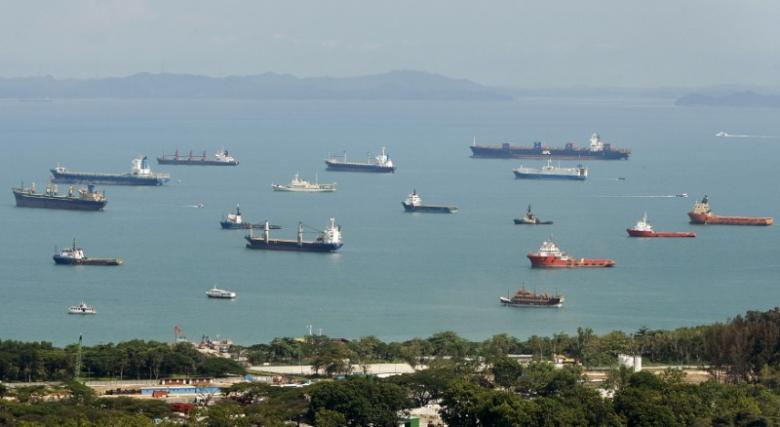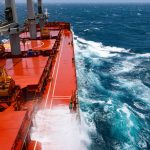Be aware: Costly liquid cargo contamination can arise when the last cargo onboard is coconut oil, palm oil, or other edible oils.
Gard has handled several liquid cargo contamination claims arising from previous cargo residues. These claims can be significant, not only entailing loss of value to the cargo but also the cost of lost time and other related expenses. A review of just two recent claims illustrates the need for caution when the last cargo was edible oils, residues of which can be more difficult to remove before loading the next cargo due to a high melting point. Cargoes with high melting points are more likely to solidify at ambient/cold temperatures if not properly cared for.
Contamination of gasoline additive
A product tanker was fully loaded in the US with gasoline additives valued at around USD 40 million. Prior to this, the vessel had carried previous cargoes of coconut and palm oil species, with melting points for some parcels at 24 degrees Celsius. Before loading the new cargo, tank cleaning was conducted using hot seawater and recirculation of alkaline cleaning chemicals which was in line with industry recommendations.
When arriving at the discharge port in the Far East, however, the full cargo was rejected by the consignee due to an alleged contamination. Expert investigation and sample analysis led to the conclusion that the most likely source of contamination was residues of the previous cargoes of coconut and palm oils. The contaminant was especially problematic for the consignee given the intended use for automotive fuel. After many months of testing and deliberation, this high-value full cargo was sold to salvage buyers in Southeast Asia. This involved a ship-to-ship transfer with another vessel and a filtering exercise to remove the contaminant.
In addition to the consignee’s claim for the depreciated cargo value, significant costs were incurred by the ship owners in storing the contaminated cargo while evaluating the best mitigation options and arranging the transshipment and filtering. The total amount of cargo claims and costs exceeded USD 10 million.
Contamination of caustic soda
Another case became even more costly. A product tanker was fully loaded with caustic soda valued at over USD 5 million. Before the subject voyage, the vessel had carried a previous cargo of vegetable oils. Tank cleaning before loading and heating of some tanks during the voyage were conducted by the charterer’s instructions.
When the vessel arrived at the discharge port in North America, however, particulate matter was found in all cargo tanks, except the few which had not been heated. The cargo in non-heated tanks was found to be on specification. Part of the contaminated cargo was discharged into separate shore tanks, but there was not enough capacity for all the affected cargo. Onboard filtering of the particulate was rejected by the receivers, who took the view that the cargo was no longer fit for purpose. They therefore sold the contaminated cargo to a salvage buyer at a significantly reduced price.
Expert investigation and sample analysis established that the particulate matter had most likely been formed by the heated chemical combination of carbon from the heat exchangers and residues of the previous cargo, which was then circulated in the caustic soda cargo. Moreover, it appeared that the heat exchangers may not have been fully cleaned before loading.
The receiver’s claim ran into millions of US dollars and included loss of market value, additional freight and storage costs, shore tank cleaning costs, and other related expenses.
Claims impact
While a certain degree of compromise was achieved during negotiations with cargo interests, the claim settlements and costs in the above cases left a significant blemish on the loss records for the Members concerned. The Members also incurred additional uninsured losses and potentially damaged relations with their customers.
Lessons learned
1. After cleaning the cargo system between cargoes in the above cases, surveyors for charterers/shippers attended the vessels at the load ports and passed the tanks fit to load. Moreover, the first foot samples were taken at the start of loading and did not reveal any visual indications of cargo contamination at that time. The crew should be aware that inspections by third parties are not a reliable indication that the vessel’s complete cargo system is free of contaminants, even after cleaning to the required standards.
2. When cleaning tanks and lines after carrying high melting point cargoes, such as vegetable/edible oils, hot water washing will often be required and the crew should ensure that the water is sufficiently warm. The time between discharge and cleaning as well as the ambient air temperatures experienced may be relevant factors.
3. Whatever the charterer’s instructions are concerning cleaning, owners should make sure that it will be effective in removing previous cargo residues. Holding charterers responsible for a subsequent problem is far from straightforward and owners will usually have a non-delegable duty to cargo interests to provide a cargo-worthy vessel.
4. There should be a vessel-specific line cleaning procedure for each stage of washing (e.g. cold-water wash, hot-water wash, and chemical recirculation) as well as inspection procedures to ensure all relevant parts of the cargo system are properly inspected and cleaned. Vessel-specific procedures were found to be lacking in one of the above cases.
5. The crew should also be fully familiar with what is required for proper cleaning and inspection of the cargo system. In one of the above cases, the crew had newly joined and were unfamiliar with the system.
6. A written record of the cleaning performed should be kept.
7. Even after thorough cleaning, it remains important to perform a close-up inspection of tanks and lines to ensure no residues remain (always after following safe tank entry procedures).
8. It is possible that solidified/frozen residues will remain near the bends/elbows in lines, as well as in manifolds and crossovers. When cargo filtering was performed in the first case above, previous cargo residues were found in the manifold crossovers. Lines in these areas should be closely examined and opened where possible to aid inspection. Other parts of the system, such as the heat exchangers in the second case, should also be sufficiently inspected. Checklists may help in conducting inspections, but whatever is used, a written record should be kept of inspections performed.
9. Cargo residues can exist as a film along the inner walls of pipelines, which may be difficult to spot in wet conditions. In dry conditions after ventilating for a couple of hours, the solid film should be more visible to the naked eye. Ideally, the inspection should be carried out during daylight for better visibility.
10. Photographic evidence of tanks/lines after cleaning can assist in defending a claim and protecting the member’s interests in the event of a dispute.
11. Lines that will not be used for cargo operations should be properly isolated.
12. It is extremely important that the crew collect and retain samples during loading, including from the vessel’s manifolds after flushing through the sampling point, and from the cargo tanks at first-foot stages, as well as after completion of loading. This will provide evidence of the cargo’s condition throughout the loading operation.
13. If any visible contamination of samples is noted during loading, operations should be suspended for investigation. If the cargo system does contain a contaminant, the quantity of cargo already loaded will be much less than for a full tank. The first indication of a problem from the shoreside will usually be the vessel manifold samples and these should be taken at regular intervals during loading if there are any concerns with the quality of cargo. High melting point cargo residues can remain in sampling points which may contaminate the samples of cargoes next loaded. The crew should ensure that sampling points are thoroughly flushed through before collecting samples of the next loaded cargo.
Source: Hellenic Shipping News






